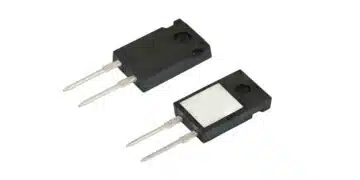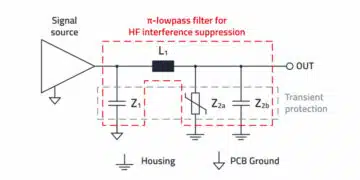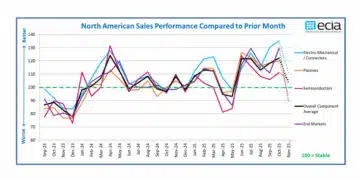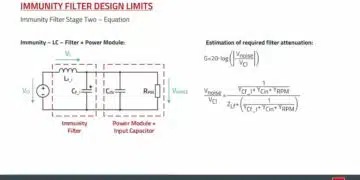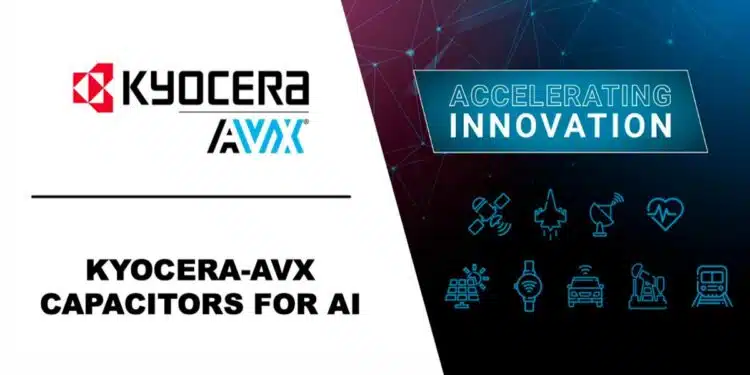The paper “Passive Components in AI Systems” was presented by Slavomir Pala, KYOCERA AVX Lanskroun, Czech Republic at the 5th PCNS Passive Components Networking Symposium 9-12th September 2025, Seville, Spain as paper No. AI 2.
Introduction
The article explores the critical role of capacitors in maintaining power integrity, controlling electromagnetic interference (EMI), and optimizing signal processing in AI systems. As AI architectures—from high-performance servers to compact Edge AI devices—evolve, the demands on passive components, particularly capacitors, have intensified. The authors outline how different capacitor technologies, configurations, and placement strategies are essential to meet the stringent power quality requirements of modern AI hardware, especially as semiconductor geometries shrink and power consumption rises.
Key Points
- AI hardware evolution: Increased computational power in GPUs, TPUs, and AI accelerators drives higher energy demands and tighter power integrity requirements.
- Power integrity challenges: Lower IC supply voltages require higher currents, leading to complex ripple voltage control and di/dt management.
- Capacitor roles: High-frequency decoupling, mid-frequency stabilization, and bulk power storage are all critical in AI systems.
- MLCC technology: Low-inductance ceramic capacitors dominate high-frequency decoupling; placement close to loads is key.
- Tantalum polymer capacitors: Offer high capacitance density, low ESR, and reduced inductance for bulk applications near regulators.
- Innovation in reduced-inductance designs: New tantalum polymer configurations improve frequency response and reduce noise in power distribution networks.
- Future trends: Continued miniaturization and capacitance increases in MLCCs and tantalum polymers will be essential for next-gen AI cores.
Extended Summary
The authors begin by noting that AI performance gains in recent years—driven by large language models, generative AI, and efficient architectures—are underpinned by advances in semiconductor technology. Specialized AI accelerators, such as Amazon Trainium, deliver higher throughput with reduced power consumption, but also introduce new challenges in power delivery. AI servers now consume up to ten times more power than traditional servers, with supply voltages dropping to sub-1V levels, making ripple voltage control increasingly critical.
Capacitors are central to managing these challenges. High-frequency decoupling capacitors, typically low-inductance MLCC ceramic capacitors, are placed as close as possible to IC loads to counteract voltage droop during rapid current changes. Mid-frequency decoupling bridges the gap between regulators and high-frequency capacitors, while bulk capacitors stabilize power supplies at the PSU and regulator level. The proximity of capacitors to loads or regulators is vital to minimize inductive loops and improve efficiency.
MLCC technology has evolved to include reverse geometry, interdigitated, and land grid array designs, all aimed at reducing inductance. Advances in case size reduction and thin profiles enable embedded capacitor placement, even in space-constrained applications. However, MLCCs can suffer from capacitance instability under bias, aging, and temperature changes—factors that designers must account for in power tree calculations.
For bulk capacitance, tantalum polymer capacitors are highlighted as near-ideal solutions due to their high capacitance density, low ESR, wide voltage range, and small physical size. Their low inductance allows regulators to be placed closer to IC loads, improving overall power quality. Recent innovations in reduced-inductance tantalum polymer designs—through modified lead frames or leadless configurations—further enhance frequency response and noise suppression. Real-world testing on a buck converter reference board demonstrated significant noise reduction across a wide frequency spectrum when using these capacitors.
The authors emphasize that as AI cores continue to operate at lower voltages with higher current transitions, both MLCC and tantalum polymer technologies must advance in capacitance and inductance performance to meet future demands.
Conclusion
AI systems, whether large-scale servers or compact edge devices, rely heavily on capacitors to maintain power quality in increasingly demanding electrical environments. The strategic use of high-frequency MLCCs, mid-frequency decoupling, and bulk tantalum polymer capacitors forms a layered approach to power integrity. Innovations in reduced-inductance designs are enabling capacitors to be placed closer to loads and regulators, improving efficiency and reducing noise. As semiconductor technology pushes voltage rails lower and current demands higher, ongoing advancements in capacitor technology will be essential to sustaining the performance and reliability of next-generation AI systems.



